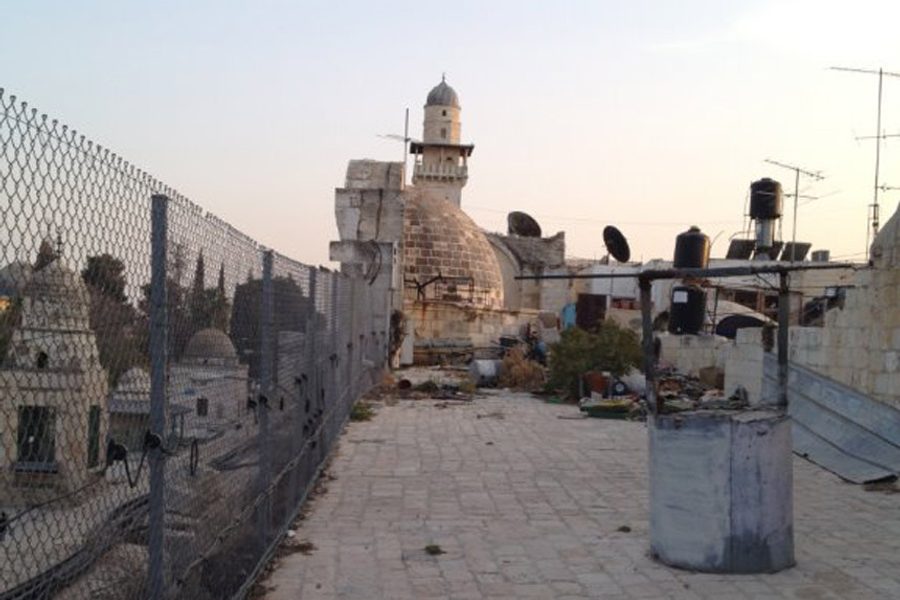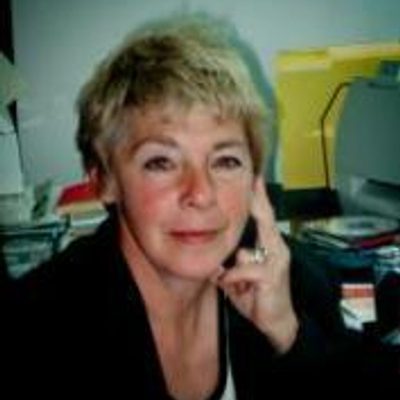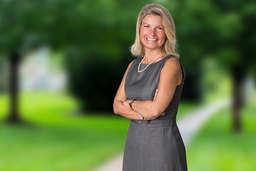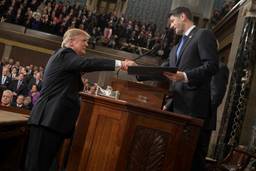Two Decades After Oslo, A Look at Life in Israel and Palestine
While in the Middle East last October, I saw firsthand why ending occupation is so necessary—and why it will be so difficult.
Marilyn Katz

With the United States-instigated Israeli-Palestinian talks beginning to collapse, pundits left and right are recommending that representatives from all three nations withdraw from the efforts before the situation worsens further.
I have to disagree.
The drama of boardroom negotiations may have dominated front-page real estate. But Israel’s continued occupation of the West Bank has consequences regardless of leaders’ next moves — to the lives and livelihood of Palestinians, to Israel’s ability to be “of the Middle East” and a “Jewish, democratic state,” and to America. And these costs won’t just emerge in future conflicts; they also affect our current political processes.
What follows is Part 1 of a two-part series chronicling the places and people I encountered while in the Middle East this past October, a time when the talks were in full swing. While I was there, I saw firsthand how occupation impacts the lives of Palestinians who live on both sides of the Green Line, and why arriving at a peaceful agreement between the two is both so difficult and so necessary.
When I arrived in Israel, I was delighted by the 70-degree weather; initially, only the presence of machine-gun armed soldiers outside the airport reminded me of the darker realities behind this sun-kissed country. Rather than taking a cab, I decided I would travel into Jerusalem via “sherut,” a shuttle bus that will take anyone from the airport to any door in Jerusalem.
Well, almost any door. According to friends and some NGOs in the region, if you are a resident of one of Jerusalem’s Palestinian areas, drivers will take you only to the edge of your neighborhood — reminding me of what it used to be like in my hometown of Chicago before it became illegal for cab drivers to refuse to take people to predominantly African-American neighborhoods.
The heart of the city
The heart of Jerusalem is the Old City, the 225-acre walled area in East Jerusalem that has existed for millennia and has been at the center of strife for nearly that long. The Old City itself is unofficially divided into quadrants among Jews, Christians, Muslims, and Armenians. Outside its borders, the rest of East Jerusalem is primarily occupied by the majority of the city’s Palestinians, both Muslim and Christian, whose families have lived there for hundreds of years. Meanwhile, the majority of the city’s Jews live in West Jerusalem; though they immigrated to Israel in small groups over many centuries, most arrived in droves as first the rise of anti-Semitism and then the horrors of the Holocaust drove them from Europe.
Prior to the Arab-Israeli War of 1948, the city was undivided. When partition began in 1948, Jordan controlled the entire Old City, East Jerusalem and the West Bank; Israel controlled all of the city to the west. After Israel won the 1967 Arab-Israeli War, however, the Israelis annexed East Jerusalem, including the Old City and an additional 70 square kilometers of land where 28 Palestinian villages were located.
Immediately after its takeover, Israel conducted a census. All non-Jews present in Jerusalem at the time were granted “permanent resident status.” Those who were not in the city at the time for any reason were forever prohibited from returning as residents. Deeds, surveys and property maps were disregarded and destroyed; the property of the absent non-Jewish inhabitants was confiscated, no matter how many hundreds of years they may have lived there or owned their homes. Non-Jewish residents were offered full Israeli citizenship if they had some knowledge of Hebrew and would swear loyalty to the State. Few took the offer.
Today, the nearly 400,000 “permanent residents” of Jerusalem — most of them descendants of the original non-Jewish population—cannot vote in national elections and have no passports. They are severely restricted in their movements and even in their access to some government services that Jewish residents take for granted.
Ground zero
Looking east from the balcony of my hotel room in West Jerusalem, I saw a vast swath of largely undeveloped land to the east and wondered what it could be. A few days later, on a trip to East Jerusalem with long-time attorney and activist Danny Seidman, I found out. It is “E1”, the area much-discussed in 2013 as the latest Israeli settlement battleground. While reading reports about E1, I had imagined a small region amid the jam-packed neighborhoods of East Jerusalem. In fact, E1 spans five square miles — and it is home to 20 Bedouin communities that have been there for decades.
If the land is confiscated by the Israeli government, E1 will create an East-West corridor through the West Bank that would sever the connections between East Jerusalem’s nearly 400,000 Palestinian residents and the more than 2 million Palestinian residents of the villages and cities of the West Bank.
Though it is an important and explosive flash point, E1 is simply the latest focal point of skirmish in the battle for Jerusalem and its center: the Old City of East Jerusalem.
A walk through the Old City’s Muslim Quarter brought home the full impact of the conflict. Accompanied by new friends — a Palestinian woman and a European human rights worker — I ascended dimly lit stairs to the rooftop of an ancient building just across from the Temple Mount. Until recently, a house sat on the roof, built by the family that have owned and occupied the building for more than 500 years. Various family members live on the first, second and third floors of the building. The rooftop house, constructed of rough stones, was built to accommodate a daughter, her husband and children. However, last summer the Israeli Defense Force demanded that the owners destroy the house because it had been built “without a permit.” Without the funds to fight the order, the family tore down the house. There have been more than 800 such demolitions in East Jerusalem alone.
One might think that the government is justified for demanding demolition of a structure without a permit, but the situation is more complex. For a Palestinian, getting a building permit is nearly impossible: Approval, which is rare, can take five to 10 years. And though about 40 percent of Jerusalem’s population is Palestinian, only 8 percent of the city’s houses have been designated for Palestinian housing. Meanwhile, almost all of Jewish Israelis’ permit applications have been approved for the thousands of houses they’ve constructed in this historic Muslim area over the last decade.
My guides say that the building permit issue is part of a plan to “Judaize” East Jerusalem in order to thwart the creation of a viable Palestinian state.
As we looked out from the rooftop to the surrounding streets, the success of the Israeli strategy was obvious. In every direction we saw scores of buildings with Israeli flags flying above their roofs. These are the newly permitted “settlements”: Single buildings, or even rooms, that Israelis have “captured” through sale or by just moving in when an occupant is not home and building onto the structure. After the “settlement” is created, an IDF presence follows to “protect” the settlers, thereby creating another military outpost in a historically Arab community.
Not a Palestinian in sight
You can tell it is Tel Aviv, because there is far less diversity here than in Jerusalem.
Tel Aviv, an hour’s drive from Jerusalem, is a Mediterranean seaside town. Its seashore is lined with high-end hotels, its boulevards with trees. The city’s economy is fueled by construction of government buildings and Israel’s growing high-tech industry.
Tel Aviv is actually Tel Aviv-Jaffa. In 1950, Tel Aviv unilaterally annexed Jaffa after nearly 65,000 Arabs fled the city during the armed conflict of 1948. The 4,000 Palestinians who stayed were “relocated” to Jaffa’s Ajami and Jabaliah neighborhoods. Israel then confiscated all the “abandoned” properties and made them “properties of the state.” Those in Ajami were granted “citizenship” but lived under military rule until 1966.
Today, Tel Aviv is a city of more than 400,000, with a population that is 92 percent Jewish-Israeli. Virtually all Palestinian residents live in Jaffa, thanks to the prohibitively high prices elsewhere in the city. Until a decade ago, friends tell me, hundreds of thousands of West Bank residents went to the beach in Tel Aviv, went to school there and worked there. Now, it is a city where they are never seen. In fact, it is possible to live in Tel Aviv and never interact with a Palestinian, except while doing military service.
No ‘little houses on the prairie’
On my first trip to Israel in 2000, the West Bank looked and felt quite different. Then there were about 200,000 Jewish-Israeli “settlers”; today there are more than 300,000.
The settlers’ red-roofed houses and concrete towers now dominate the landscape from Jerusalem to Ramallah, extending North to Nablus, east to Jericho, south to Hebron and West to Tulkarem.
These are not “little houses on the prairie.” Rather, they are installations built to house anywhere from 500 to more than 30,000 people, built in flagrant violation of international and sometimes even Israeli law.
Whatever their origin, as the settlements grow, so does the impact of occupation. For example, though all available water is drawn from the aquifer below the West Bank itself, it is controlled solely by Israel. Israelis receive 80 percent of the water from the West Bank, while neighboring Palestinian villages receive only 20 percent, depriving the latter of a resource essential for both daily activities and for nurturing the olive groves that have been the lifeblood of their communities for centuries.
And while village children are arrested en masse (and sometimes killed) for throwing stones, the UN reports that settlers rarely face any consequences for actions like burning their Palestinian neighbors’ olive trees.
Thus, the Palestinians I met see settlements as part of a strategy to divide their people, forcing them into areas that cannot support them or their families. When I met with progressive Jewish-Israeli leaders later in the week, many agreed that the settlements could be seen as movement by the government to slowly encircle Palestinian holdings with Israeli land.
What the future could be
Rawabi is a new city being constructed in the West Bank by and for Palestinians.
Finding an Israeli-Palestinian driver willing to do so, I crossed from Israel by checkpoint into the West Bank. Halfway between Ramallah and Nablus we left the dry desert floor and climbed into the hills, covered by surprisingly lush green pines and olive trees. About five miles later I saw a sight that moved me: a Palestinian flag atop a mountain.
As we drew closer I saw two modern mid-rise buildings. This was Phase I of Rawabi, the first entirely new city to be built in the West Bank — and one built almost exclusively with Palestinian labor and Palestinian and Qatari money.
The two buildings I saw will soon house 1,000 families on either side of an expansive plaza anchored by a retail and commercial center under construction. Walking on the site, I peered down the hillside, seeing the outlines of a 20,000 – seat amphitheater that is being carved into the side of the mountain on which the city sits. To my left three schools were under construction; to my right I saw the cornerstones of both a mosque and a church.
Planned for an eventual population of 40,000, the first homes in Rawabi have been sold. This year, developers tell me, the first 3,000 people will move in. It is a bold endeavor with great impact already. Rawabi corporation is the largest private employer in the West Bank. All construction work and preparation is done on site. Palestinians quarry and cut the stone, and mix the cement. All engineering, architectural staff and builders are Palestinians, and when European expertise is needed, the consultants are paired with Palestinians to ensure knowledge transfer. The developers estimate that 8,000 people will be employed in the construction of Rawabi; one-third of its engineers are women.
The development, however, is not free from the burden of occupation. There have been continuous battles over access for deliveries on the Israeli-controlled road, and knowing that Israel could cut off the supplies of steel or other needed goods at any time, most building materials must be created or kept onsite.
The current battles are about water and telecommunications. The Israeli government has yet to allow Rawabi access to the water it controls. Similarly, while Rawabi’s future as a commercial and residential hub will depend on whether they have 4G Internet service, Israel has not allowed any part of the West Bank to have it.
For Bashar Masri, the entrepreneur behind the project, Rawabi is about creating a sustainable community in the desert and about nation-building — about thriving in the midst of oppression, about demonstrating capacity and creating economic opportunity.
Veterans of stone-throwing and prison themselves, Rawabi’s developers assert that they are creating a new path, one that challenges the occupation at every step.
Later that day, a Palestinian friend explained to me, “Occupation is not a concept. It is a reality that circumscribes and limits the action and the lives of every Palestinian each and every day. Forms of resistance may vary, but every act — whether it be a stone thrown out of boredom or desperation or a building … built despite the Kafkaesque barriers put in its way — is real, pervasive and indicative of a people which plans and hopes are not to die as martyrs but to live, prosper and build a nation in the process.”
This is occupation — and Rawabi is one more compelling reason to end it.








